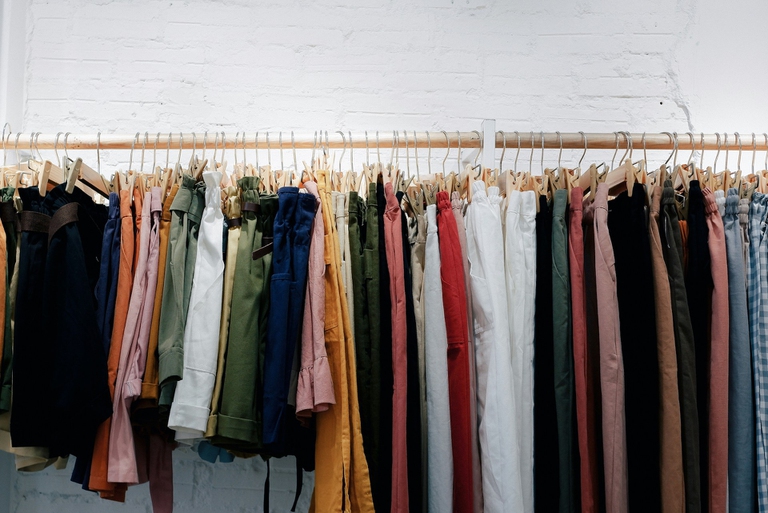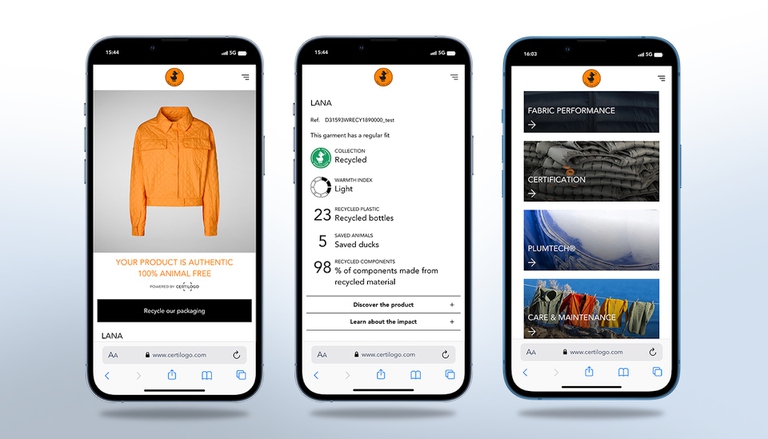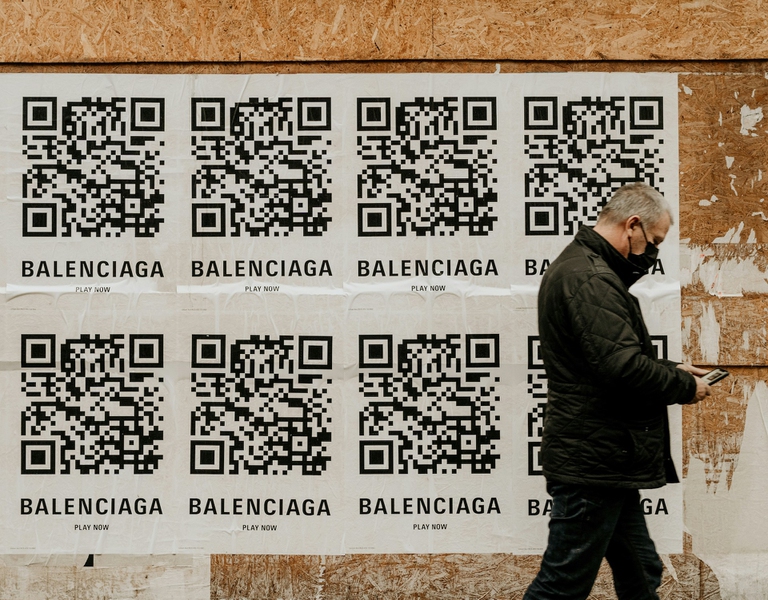https://www.lifegate.it/digital-product-passport-come-funziona
- |
- The digital product passport (DPP) is a comprehensive collection of all data relating to the product, from the raw material to the production processes, from the use of water and chemical agents to the energy used, up to the treatment of workers.
- This tool, already adopted on an experimental basis by some companies, is functional to putting into practice the European strategy for sustainable and circular textiles.
Sooner or later it will be a mandatory transparency tool but, while a European directive is still in preparation, the digital product passport it has been adopted on an experimental basis by some companies.After the approval of strategy for sustainable and circular textiles in fact, by Brussels in March 2022, the European Union started the implementation of regulations and concrete actions.The main objective of this strategy is to ensure that, by 2030, all textile products produced in the Union territory comply with rigorous environmental standards.These requirements focus mainly on the design of the items, which for example must be rethought to encourage recycling or reuse at the end of their life.Furthermore, it is required that the products are made with natural and biodegradable fibers and that the production processes are efficient from a consumption point of view.To achieve this objective, a crucial tool will be the digital product passport (DPP), a widespread collection of all product data, from the raw material to the production processes, from the use of water and chemical agents to the energy used, up to the treatment of workers.
“The digital product passport is a way of sharing information that is often already disclosed by brands, for example in the sustainability report, but in a more compact way:with this tool you have a greater level of detail and above all you have it compared to each individual product" he explains Silvia Mazzanti, sustainability manager of Save The Duck, a brand that was the first to decide to equip all the products in its collection with this tool.“Currently other players in the sector also do it, perhaps on some garments or on a capsule, but not on all products”.

What is the digital product passport for?
In a nutshell, the digital product passport is a very detailed collection of information who are able to provide the most exhaustive picture possible regarding the creation of a product, transmitted in the form of QR code.“These are months and months of work that are needed to also feed many other containers, such as those that allow us to report to United Nations Global Compact, to fill in theImpact assessment from the B Corp or other ratings requested for example by large department stores at European level.Having this critical mass of data is vital to be competitive on the market,” continues Mazzanti.
The actual implementation of the legislation, with the adoption of the DPP at European level, will not be ready before 2025, but more likely will see the light by 2026, as regulation of the data collection standard is expected by the end of 2024.“Even if the adoption of the DPP is still far from being law, Save The Duck's position is to build this instrument gradually:we don't have to wait for the law to arrive, on the contrary:by experimenting, we will act as guinea pigs.Carrying out these piloting activities also serves to give the legislator some tips because, normally, he does not have a real knowledge of the facts of the sector:it is essential to have an opinion from the players who already deal with these issues and see difficulties and potential."
What was the process that pushed Save the Duck to provide all the products in the collection with a digital product passport?
We felt very strongly the need for the sales and retail side to be supported in finding information on sustainability.As a company we have equipped ourselves since 2018 with sustainability report, but we didn't think it was enough.In fact, we wanted a tool that was effective for those people who are directly in contact with the product, i.e. sellers and customers, so we anticipated the legislation.
On a practical level, what were the steps?
We thought about transforming the label Certilogo, which has always been in our garments and demonstrated their originality, and transform it into an even more speaking instrument.This is where this project was born in which, when you scan the QR code, you always have with you the set of information relating to the chosen product and then, as a corollary, also a part of all the company's activities.Specifically, the experience accessed from the QR code starts from the request to verify that the product is actually an original Save The Duck and then goes on to discover what the functional characteristics of this product are, therefore the structural performance, therefore the materials, and everything that goes along with the construction and is never seen, such as the certification that accompanies the raw materials and the place of production.We also have two other data regarding the cluster of garments made with recycled materials:the approximate calculation of the quantity of bottles necessary to weave the external shell and those necessary to create the padding and, through a calculation method created by us, also the estimate of how much real down would have been necessary to fill one of our garments.This data allows us to calculate how many ducks were not plucked to fill a Save The Duck.If a customer decides to buy one of our items, they take away a small piece of market share from a brand that perhaps does not have this ethical attention towards animals.

What elements are necessary to fill out a DPP?
Information.This tool is essentially based on a structure, created by Certilogo, which is a digital experience:the data that feeds it comes directly from the investigations conducted by us, reported in our sustainability report which is then verified by a third party, therefore certified.The emissions calculation is part of this data CO2 and climate-altering gases, also ISO 140064 certified.All of this is obviously also part of the sustainability report, except that it is summarized there, whereas it is more detailed in the DPP.We try to get information from our suppliers on everything:from the impacts on energy consumption to the quantity of materials and handling also at a territorial level between a level 1 and level 2 supplier.This is information that we collect independently and which is then validated by third parties.
What are the biggest challenges related to filling out the DPP?
One of the most difficult things is to thoroughly control the supply chain.We have been working with the same suppliers for more than 10 years, so we have very long-standing relationships, which is a huge advantage because they have literally grown together with us.We periodically have meetings with them and then we have fairly rigorous control systems with Save The Duck staff who carry out periodic audits.In this sense we are fortunate to have direct control, also functional in bringing the mood of theheadquarter to those who collaborate with us.Having built such solid relationships allows us to be the number one pain in the ass today.Because to obtain all this enormous mass of data you need tenacity:we had to explain to the suppliers why we needed that data and it's not easy to make them understand that we don't do it to damage them.This sense of distrust towards those who ask too much of you is very common in the textile sector, for fear that the customer might skip a level and go directly to the manufacturer.It is clear that we do not go deep enough to even know where all the polymers that make up our garments come from, but in some cases we have managed to reach levels of supply chain very detailed, such as who produces the thread and the raw materials and, in the case of recycled yarns, where the recycled bottles come from.

What is the ultimate goal of the digital product passport?
For us it is important to push the user's sense of responsibility.We get up to a certain point, but when the product leaves our warehouses we lose contact with it and, although we make ourselves responsible for the end of life, the basic idea that underlies everything is also that of teaching our customers to have treatment.For us, an effective way of doing this is to explain how that specific item is made and how to best maintain it.The digital product passport has many functions, including educational;wants to spread a concept of responsibility also extended to the customer, not just the manufacturer.It is a living tool, which will also see upcoming development phases and which we want to promote a lot, because we are sure that having this type of information always available will be an incentive for people to be guided through different choices.Have a label that always takes you back to how to maintain a product, where to put the packaging if you want to throw it away:It's like having a cheat sheet always in your pocket.
